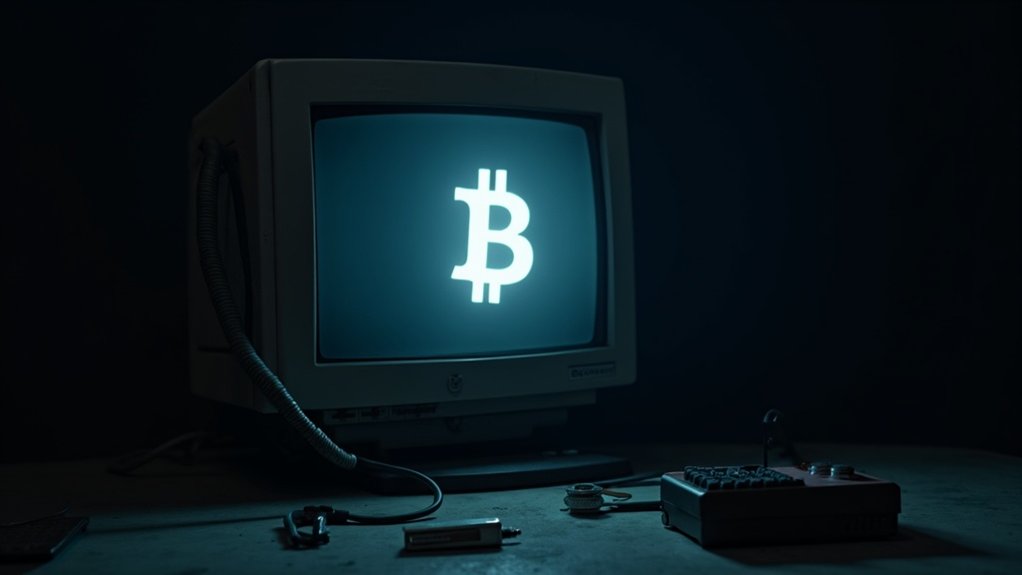Blockchain technology creates trust in suspicious environments without middlemen. It’s not just another tech fad. Through cryptography and decentralization, it makes data tampering virtually impossible while maintaining complete transparency. Every transaction leaves an undeniable trail. No more excuses about mysterious delays. It cuts costs, reduces errors, and gives users control over their personal data. Market forecasts suggest it’s heading toward a trillion-dollar valuation by 2032. The revolution has only just begun.
While buzzwords come and go in the tech world, blockchain technology has proven itself more than just another fleeting trend. At its core, blockchain serves one fundamental purpose: creating trust in environments where it’s otherwise difficult to establish. Pretty revolutionary stuff, actually.
Blockchain’s enhanced security features are no joke. Through cryptography and decentralization, it makes data tampering nearly impossible. Once information hits the ledger, it’s there to stay. No takebacks. No “oops, let me just change that real quick.” This immutability builds confidence among users who might otherwise be suspicious of each other. Mining nodes validate transactions and create new blocks to maintain this secure environment.
Once data enters the blockchain, it’s carved in digital stone—no more convenient “revisions” to the truth.
Transparency is another game-changer. Everyone with access sees the same information, creating an undeniable audit trail. No more “the check is in the mail” excuses. Transactions are traceable from start to finish, making it perfect for supply chains where knowing where your stuff comes from actually matters.
Efficiency gets a major boost too. Middlemen? Gone. Those pesky intermediaries that slow things down and take a cut? Not needed. Smart contracts execute automatically when conditions are met. No human required to push the button. This saves time, reduces errors, and cuts costs considerably. The real-time access to information by all participating parties further enhances this efficiency.
Users gain unprecedented control over their data. They decide who sees what and when. Novel concept, right? In a world where our information is typically the product, blockchain flips the script.
The decentralized nature creates ecosystems where competitors can collaborate without surrendering power to a central authority. No single entity calls the shots. It’s democratic by design. The market for this technology is experiencing explosive growth with forecasts approaching 1 trillion USD by 2032, reflecting its expanding importance across industries.
For businesses, faster auditing and compliance aren’t just nice perks—they’re financial necessities. Records can’t be altered retroactively, making verification straightforward. Auditors actually finish before their coffee gets cold.
Blockchain isn’t perfect. Initial setup costs can be substantial. But its purpose is clear: to create secure, transparent, efficient systems where trust is baked into the technology itself, not dependent on fallible institutions or individuals. That’s worth something.
Frequently Asked Questions
How Does Blockchain Technology Consume Energy?
Blockchain technology devours energy primarily through proof-of-work mining. Computers compete to solve complex puzzles, validating transactions and earning rewards.
The catch? These puzzles get deliberately harder as more miners join. Bitcoin’s the biggest energy hog, consuming as much electricity as entire countries. Think Thailand-level consumption.
Proof-of-stake blockchains use considerably less power—no competitive mining needed. Some operations use renewables, but let’s be real: blockchain’s appetite for electricity is massive, wasteful, and growing.
Can Blockchain Technology Be Hacked?
Yes, blockchain technology can be hacked. Despite its reputation for security, several vulnerabilities exist.
51% attacks let attackers control the majority of network power. Sybil attacks create fake nodes to manipulate transactions. Routing attacks intercept data between nodes.
Smart contracts contain exploitable code flaws—just ask the folks who lost $60 million in the DAO hack. The technology isn’t invincible.
Hackers keep finding creative ways to exploit weaknesses, proving no system is truly bulletproof.
What Are the Privacy Concerns With Blockchain?
Blockchain’s transparency is a double-edged sword. Everything’s visible forever—yeah, forever.
This permanent record contradicts privacy rights like GDPR’s “right to be forgotten.” Public ledgers can reveal identities through correlation attacks, linking supposedly anonymous data to real people.
Once information hits the blockchain, it’s there to stay. No deletions, no corrections.
Fancy solutions exist—zero-knowledge proofs, differential privacy—but they’re complex and resource-intensive.
The regulatory frameworks? Still playing catch-up.
How Do Blockchain Consensus Mechanisms Work?
Blockchain consensus mechanisms are protocols that guarantee all nodes agree on the validity of transactions.
They’re ingenious, really. Nodes validate proposals through predetermined rules, then vote on them.
Different flavors exist – Proof of Work burns electricity to solve puzzles, Proof of Stake requires skin in the game through staked tokens.
Some networks elect delegates, others use pre-approved authorities. Each method balances security, decentralization, and speed differently.
No perfect solution exists. Trade-offs everywhere.
What Regulatory Challenges Does Blockchain Technology Face?
Blockchain technology faces several major regulatory hurdles.
Classification confusion reigns – is it a currency, security, or something else entirely? Nobody quite agrees.
AML/KYC requirements clash with blockchain’s pseudonymous nature.
Cross-border jurisdiction is a nightmare since blockchain ignores national boundaries.
Meanwhile, innovation outpaces regulation at breakneck speed.
DeFi and smart contracts? Regulators are still scratching their heads.
The result? A fragmented regulatory landscape where companies struggle to comply with conflicting rules.








